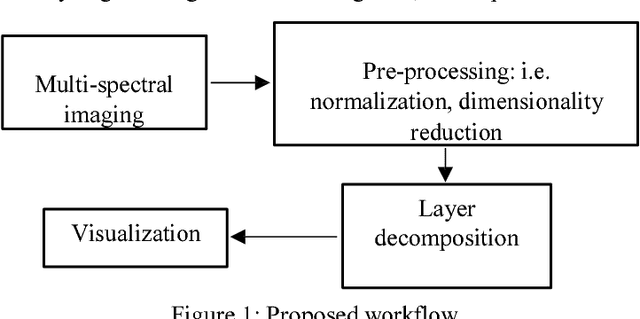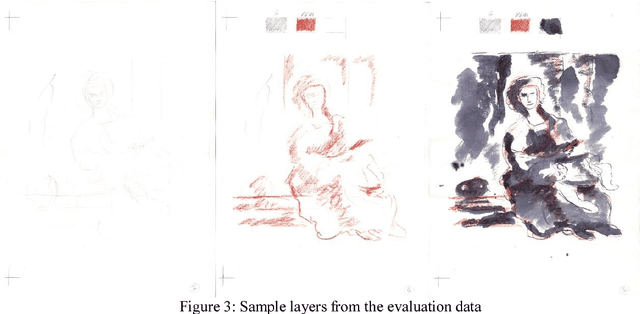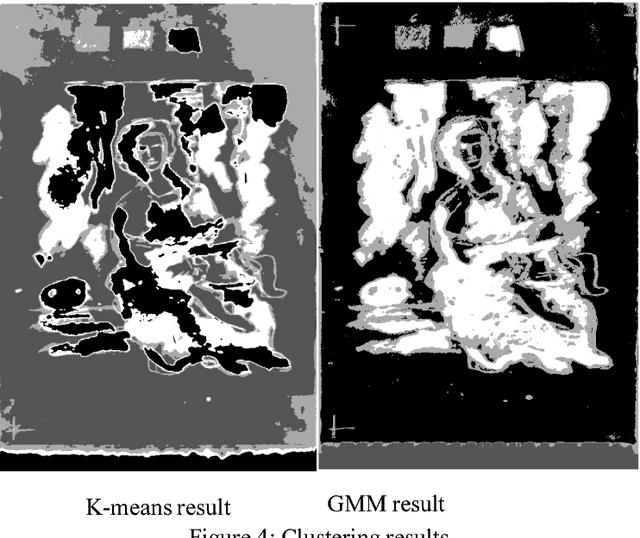Sketch Layer Separation in Multi-Spectral Historical Document Images
Paper and Code
Dec 10, 2017



High-resolution imaging has delivered new prospects for detecting the material composition and structure of cultural treasures. Despite the various techniques for analysis, a significant diagnostic gap remained in the range of available research capabilities for works on paper. Old master drawings were mostly composed in a multi-step manner with various materials. This resulted in the overlapping of different layers which made the subjacent strata difficult to differentiate. The separation of stratified layers using imaging methods could provide insights into the artistic work processes and help answer questions about the object, its attribution, or in identifying forgeries. The pattern recognition procedure was tested with mock replicas to achieve the separation and the capability of displaying concealed red chalk under ink. In contrast to RGB-sensor based imaging, the multi- or hyperspectral technology allows accurate layer separation by recording the characteristic signatures of the material's reflectance. The risk of damage to the artworks as a result of the examination can be reduced by using combinations of defined spectra for lightning and image capturing. By guaranteeing the maximum level of readability, our results suggest that the technique can be applied to a broader range of objects and assist in diagnostic research into cultural treasures in the future.
 Add to Chrome
Add to Chrome Add to Firefox
Add to Firefox Add to Edge
Add to Edge